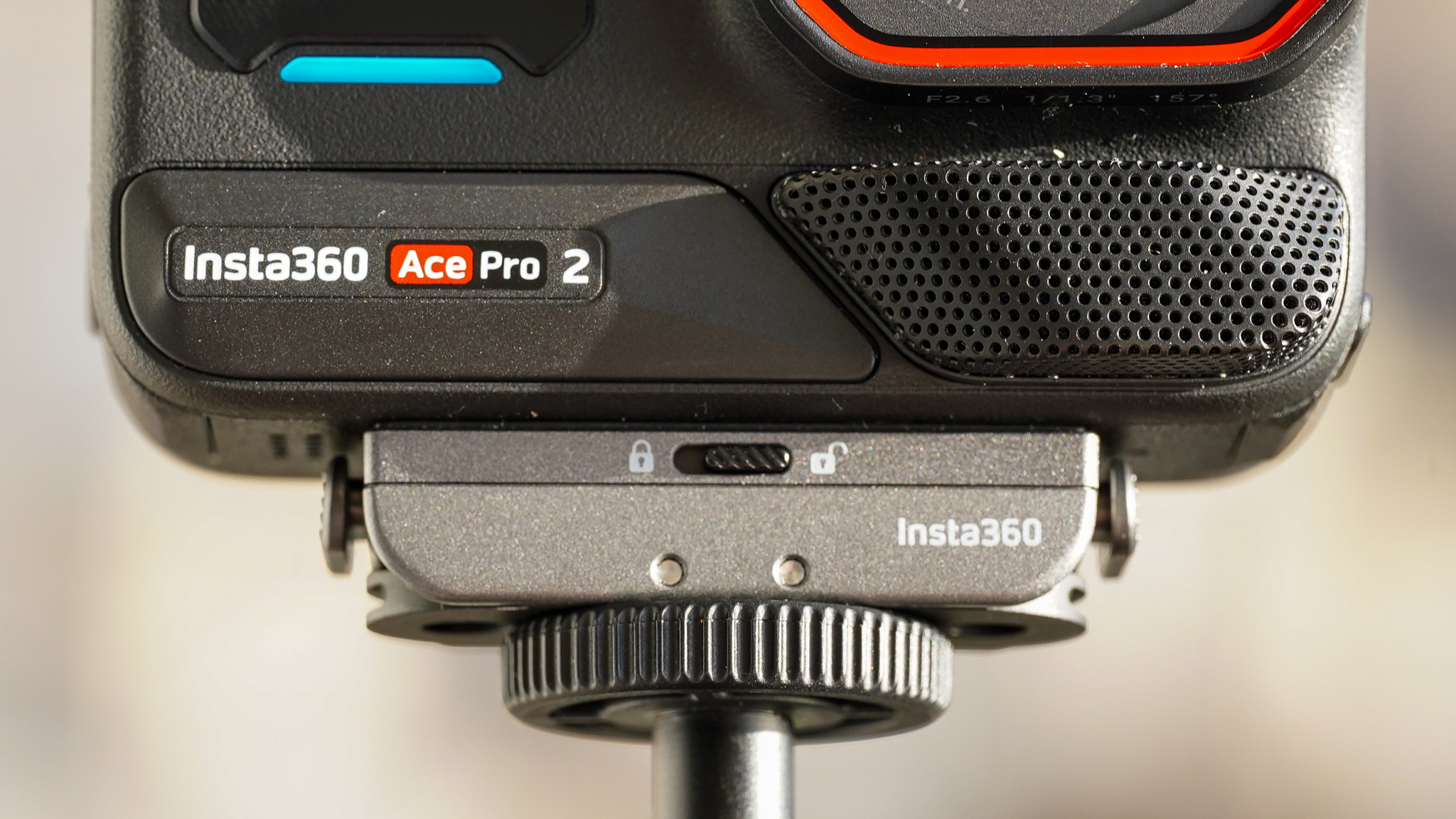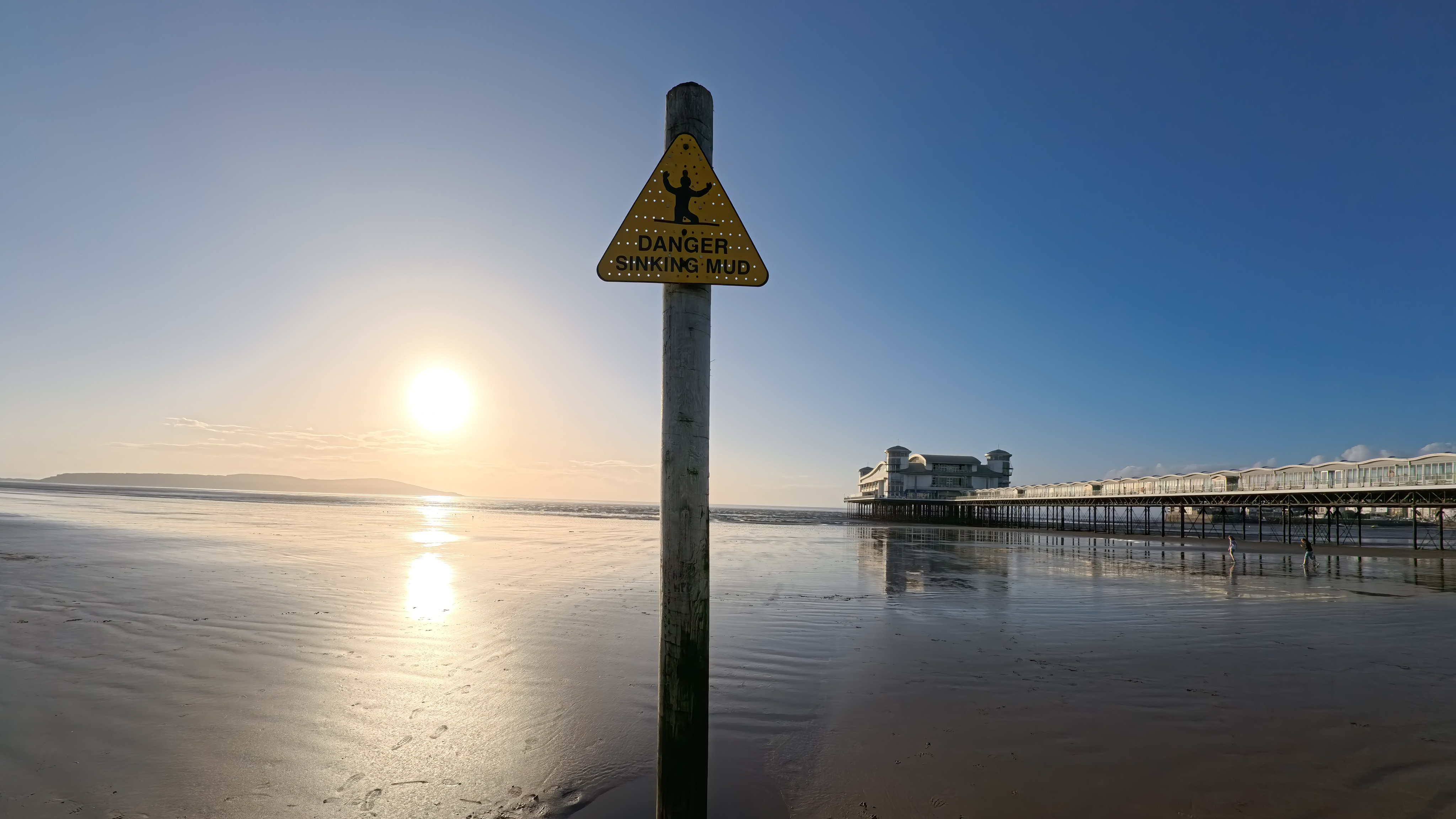Insta360 Ace Pro 2 review: Sharp shooter
Is Insta360’s Ace Pro 2 the hero GoPro should fear?



The Insta360 Ace Pro 2 delivers impressive upgrades with 8K video, dual-chip processing, and stellar low-light performance. Its improved audio, faster charging, and rugged design make it ideal for action-packed adventures and vlogging. A worthy upgrade for most, but if you own the Ace Pro, the leap may not feel essential just yet.
-
+
8K video resolution
-
+
Dual-chip processing
-
+
Excellent low-light performance
-
+
Improved audio features
-
+
Fast charging
-
+
Rugged, waterproof design
-
-
8K resolution may be overkill for most users
-
-
Vertical shooting mode still doesn’t work when the camera is horizontal
-
-
Minor photo resolution upgrade
Why you can trust T3

The Insta360 Ace Pro 2 is finally here! The brand teased its arrival a week ago, and, to be fair, the only question we had at the time was whether the new action camera would be the Ace 2 or the Ace Pro 2 (maybe both).
Turns out it’s the Ace Pro 2, and I can’t say I’m disappointed. Not sure where this leaves the Ace, but I’m happy the flagship non-360° is getting a face lift. More than a facelift, actually! The Ace Pro 2 introduces an exciting dual-chip setup, 8K resolution, wider FOV, better low-light capabilities, and more.
The Insta360 Ace Pro was crowned best action camera in this year’s T3 Awards, and its successor is every bit as impressive as the original was, and than some. I’ve been testing the camera for the last few weeks, and it’s been an absolute delight so far.
Even though the Ace Pro 2 was announced only about a year later than the Ace Pro, it feels more than an iterative update. And while I was perfectly happy with the original, I’m glad to see Insta360 worked hard to update the camera so quickly, making it a better choice for both amateur and professional.
Insta360 Ace Pro 2 review
Price and availability
The Insta360 Ace Pro 2 was announced in October 2024 and is available to buy now directly from Insta360 for the recommended price of $399.99/ £389.99/ AU$689.99. This is the price for the Standard Bundle, which includes the Insta360 Ace Pro 2 (with Wind Guard), one battery, a Standard Mount, a Mic Cap, a USB-C Cable and a QuickStart Guide.
For comparison, the Ace Pro’s launch price was $450/ £430/ AU$729, so the new camera is cheaper than that! Of course, you can acquire the original for less these days, but still, the new Ace Pro 2 isn’t that much expensive, considering the updates.
The Dual Battery Bundle, which is the same as the above but with an additional battery, costs $419.99/ £409.99/ AU$719.99. Considering the spare battery costs nearly twice as much as the price difference, I’d say it’s a good idea to get this bundle.
Get all the latest news, reviews, deals and buying guides on gorgeous tech, home and active products from the T3 experts
Specifications
- Sensor size: 1/1.3"
- Max aperture: F2.6
- FOV: 157°
- Max video resolution/frame rate: 8K@30fps, 4K@120fps, 1080p@240fps
- Max photo resolution: 50MP (8192 x 6144 pixels)
- Video modes: Video (with built-in Active HDR), FreeFrame Video, PureVideo, Slow Motion, Starlapse, Timelapse, TimeShift, Loop Recording, Dashcam, Pre-Recording
- Photo modes: Photo, HDR Photo, Interval Photo, Burst Photo
- Weight: 177.2g (6.3oz)
- Dimensions: 71.9 x 52.2 x 38 mm (2.8 x 2.1 x 1.5in)
- Battery capacity: 1800mAh
- Charge time: 47 mins (30W fast charging adapter), 75 mins (5V/3A)
- Run time: up to 180 minutes
- Connectivity: BLE 5.2, 2.4GHz, 5GHz 802.11 a/b/g/n/ac, USB-C 3.0
Design and build quality

The insta360 Ace Pro 2 follows the design language set out by its predecessor. The red accents remain, and the new camera was also co-designed with Leica and uses the brand’s SUMMARIT lens. The camera unit is different; the lens now has a wider 157° field of view compared to the Ace Pro’s 151°.
The new optical setup allows the Ace Pro 2 to lower its minimum focusing distance to 0.37m (1.2ft) from the Ace Pro’s 0.4m (1.3ft). It’s not quite as low as the GoPro Hero 13 Black with a Macro Lens Mod (0.11/ 4.33in), but impressive nevertheless.
It might just be me, but the front display looks ever so slightly larger than before and a hair brighter. The rear display 2.5” is 0.1” larger than before and is still flippable, just like on the Ace Pro. The button layout is the same, although the shape of the recording button went from square to round (it doesn’t change the functionality, though).
Whereas the Ace Pro only had a small hole in the front of the camera, the Ace Pro 2 adds a removable wind guard to ensure better audio quality in windy environments. You’ll also find a little plastic cover in the box to use underwater. I like the wind guard, but that plastic cover is very easy to misplace.
The Ace Pro 2 uses the same magnetic mount as its predecessor. Since the camera body does not have a 1/4-20 mounting thread, mounting requires a magnetic base. The box contains a Standard Mount, which can be affixed to the various sticks that accommodate 2-prong mounting.
The new action camera is more water tight than before. The Ace Pro could reach 33 ft of depth (10 m) without a Dive Case. The Ace Pro 2 can go as deep as 39ft (12m) without the dive case. Maximum depth with the Dive Case remains the same at 60m (197ft).
Features and technology

One of the biggest updates of the insta360 Ace Pro 2 is that it can now shoot videos in glorious 8K resolution at 30 frames per second. The Ace Pro’s maximum resolution was 4K, so the successor grants access to a lot of extra pixels. The camera can also shoot in 4K at 120fps and 1080p at 240fps for those slo-mo moments.
The sensor size is the same as before at 1/1.3“, but it’s an updated version that supports 13.5 stops of dynamic range now. The other big-ticket enhancement is the dual-chip setup. As well as the 5nm AI Chip, the Ace Pro 2 also features a Pro Imagining Chip, working in tandem to reduce processing time.
Insta360 claims the computing power is 100% higher than Ace Pro, thanks to each chip dedicating more power to different tasks. It’s like your computer’s CPU and GPU working in harmony (from what I can tell).
The area that benefits the most from this setup is AI noise reduction. The Ace Pro has already been one of the best cameras for low-light shooting, but the Ace Pro 2 takes this to the next level. As a result, the PureVideo Mode (a.k.a. Low-light mode) can now record footage in 4K@60fps, and the max resolution in Active HDR has also been bumped up to 4K@60fps.
Image stabilisation performance stayed the same, which is by no means a bad thing. You get the latest FlowState algorithm with an in-camera 360° Horizon Lock feature. There is also a 45° Horizon Lock option, which flicks the footage at a 90° angle as the camera rotates.
The lens has a larger field of view, so the viewing angle options have been improved. MegaView has less distortion around the edges, and ActionView can now see a ridiculously large area, almost rivalling the Insta360 X4 (well, not quite), but still.
Max photo resolution has been bumped up from 48MP in the Ace Pro to 50MP in the Ace Pro 2. Clarity Zoom is back, but understandably, it only works up to 4K@60fps videos and 12.5MP photos. Clarity Zoom lets you zoom in on objects by double-tapping the rear display; it’s a convenient way to narrow down the field of view without excessive walking.
As well as working with Insta360 on the optical unit, Leica also provided a few branded presets (Leica Natural and Leica Vivid), which can be summoned via swiping right from the edge of the display. The presets work in both photo and video modes.
Performance
A post shared by Matt Kollat (@pace_max_pro)
A photo posted by on
As expected, the Ace Pro 2 performs well in scenarios where other action cameras might struggle, especially in low-light situations. I shot a few Instagram reels in the dark with the camera, and one of them looked like I was bathed in light, whereas in reality, it was pretty dim at the time.
Image stabilisation is top-notch. I used the Ace Pro 2 handheld on runs and cycles, and the end result was always smooth footage. The Ace Pro already performed well in this regard, but the successor feels a bit better still.
Photos look good, although that extra 2MP isn’t a huge improvement over the Ace Pro’s maximum resolution. I’d argue that you’re better off shooting 12.5MP photos because they look more than adequate, and you can use the Clarity Zoom to bring items closer, almost acting as a telephoto lens.






I found Insta360 footage slightly oversharpened and saturated, although not to the level where it would be too much. Despite ‘only’ being 5.7K, GoPro's videos look smoother and more realistic. In comparison, Insta360 videos and photos are livelier and more exaggerated.
It’s hard to tell how well the dual-chip setup performs. Insta360 is a bit mysterious about what the two chips do, apart from the noise reduction benefits. One area where I noticed an improvement is on-camera image and video processing time. The Ace Pro took its sweet time to make some of the longer videos available to view, but it only takes a second or two for the Ace Pro 2 to do the same task.
Insta360 hasn’t addressed one of my grievances with the Ace Pro: vertical shooting. You can shoot vertically with the Ace Pro 2, but you have to tip the camera on its side, which I find cumbersome in certain situations. I would much rather have an option for the camera to shoot vertically while the unit itself is horizontal.
Luckily, the Ace Pro 2 introduced an I-Log Color Profile, so if you know how to handle colour grading processes in post, you’re in for a treat. I must confess I haven’t tried this functionality. Insta360 also added timecode support, allowing multi-cam synchronisation. Admittedly, both of these features are geared towards pros.
A post shared by Matt Kollat (@pace_max_pro)
A photo posted by on
My favourite new update is the improved audio processing. Voice isolation and wind noise reduction work really well, almost making external microphones obsolete. There are three voice settings: Wind Reduction Mode, Stereo Mode and Voice Enhancement Mode. They are all self-explanatory, really. The new wind guard works excellently, too.
This Ace Pro 2 also offers a myriad of microphone connectivity options. You can use RODE’s Wireless GO II, Wireless ME, VideoMicPro+, VideoMic and Wireless PRO models, as well as DJI’s Mic and Mic 2 and a ton of other Bluetooth microphones from other brands, such as Hollyland, Sony, Boya and Saramonic.
Battery life and charging

The Ace Pro 2's battery capacity has been upgraded to 1,800mAh (the Ace Pro’s was 1,700mAh), promising a maximum of 180 minutes runtime, a huge improvement over its predecessor. Of course, this only applies if you shoot videos in lower resolution and frame rates.
You also have to set the camera to Endurance Mode, a new setting that preserves battery life. In this mode, the Ace Pro 2 offers a 50% longer runtime at 4K30fps than the Ace Pro.
During my run test, I set the camera to Endurance Mode at its highest setting (4K30fps) and set it down on the balcony to record the sky. There was a bit of an airflow to keep the camera cool. The Ace Pro 2 managed almost exactly two hours before complete battery exhaustion. I'll run the test in a lower setting to see if the battery lasts longer.
The Insta360 Ace Pro 2 charges faster than before, reaching 80% in just 18 minutes and fully charging in just under 50 minutes (the brand’s official claim is 47 minutes). Better still, a reverse charge function lets you connect the Ace Pro 2 to your smartphone via USB-C or Lightning to charge it (the phone), the camera essentially acting as a power bank.
Verdict

The insta360 Ace Pro 2 is a better action camera than its predecessor. It has more features, shoots in higher resolution, offers longer battery life and faster charging, professional settings and the same easy-to-understand user interface and app we all love.
Much like in the case of the X4, I find the 8K resolution almost redundant; the updated PureVideo mode is more valuable than a super-high resolution that you can’t really showcase anywhere. The same goes for photo resolution updates.
There is no need to chase higher resolution with every update. Instead, refine the algorithm and make the footage look more lifelike. There is always room to improve image quality, especially when new sensors and chips are introduced.
The Ace Pro 2 is still the best rugged camera for vlogging, thanks to wider FOV and the large, pivoting display, which allows you to frame selfies better. Of course, it can be used for a lot more than just selfies, and the Ace Pro 2 is well-suited for action scenarios as well as underwater adventures.
It retails for the same price as the GoPro Hero 13 Black, its main rival. It’s hard to tell which is better; I love the Hero 13 Black and adore the Ace Pro 2. I would say that the GoPro produces smoother footage, while the Ace Pro 2 excels in low-light conditions. They are durable enough for action, especially as they both have removable lens guards.
One thing is for sure: the Insta360 Ace Pro 2 is a formidable action camera. It has better audio and video capabilities than its predecessor, a more rugged body, and processes tasks faster. Should you upgrade from the Ace Pro? If you bought it recently, I would say there is no rush. Everyone else, check this camera out!
Also consider
GoPro Hero 13 Black: The GoPro Hero 13 Black delivers smoother video with top-tier stabilisation (HyperSmooth 6.0), making it ideal for general action use. However, it falls short in low-light performance and lacks the 8K video resolution of the Insta360 Ace Pro 2.
DJI Osmo Action 5: The DJI Osmo Action 5 is a budget-friendly option with strong stabilisation and colour accuracy, perfect for casual action filming. It maxes out at 4K resolution and doesn’t match the advanced features or dual-chip performance of the Ace Pro 2.
Insta360 X4: The Insta360 X4 shines with immersive 360° footage, making it a great choice for creators focused on VR-style content. The Ace Pro 2, however, is better for traditional action footage with its 8K resolution and superior low-light capabilities.

Matt Kollat is a journalist and content creator who works for T3.com and its magazine counterpart as an Active Editor. His areas of expertise include wearables, drones, fitness equipment, nutrition and outdoor gear. He joined T3 in 2019. His byline appears in several publications, including Techradar and Fit&Well, and more. Matt also collaborated with other content creators (e.g. Garage Gym Reviews) and judged many awards, such as the European Specialist Sports Nutrition Alliance's ESSNawards. When he isn't working out, running or cycling, you'll find him roaming the countryside and trying out new podcasting and content creation equipment.